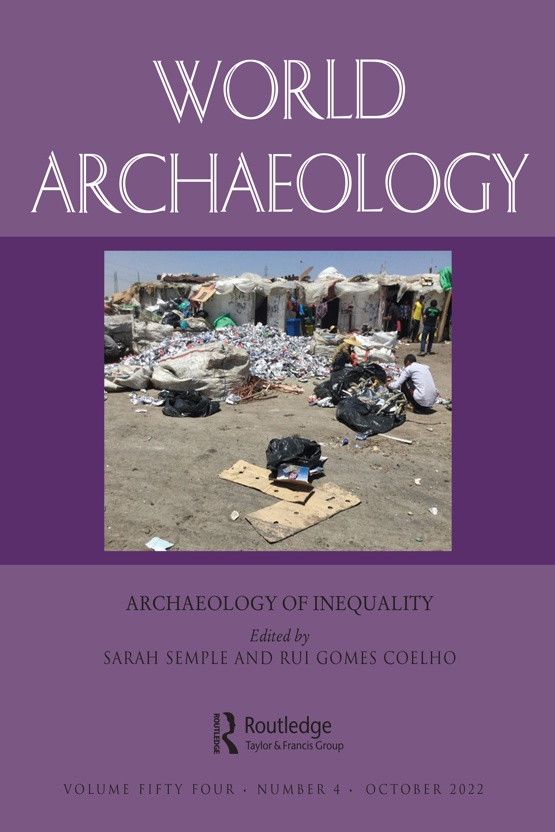Submit a Manuscript to the Journal
World Archaeology
For a Special Issue on
Carved Stone
Manuscript deadline

Special Issue Editor(s)
Sarah Semple,
Department of Archaeology, Durham University
s.j.semple@durham.ac.uk
Marta Diaz-Guardamino,
Department of Archaeology, Durham University
marta.m.diaz-guardamino@durham.ac.uk
Carved Stone
Sculpting in stone is a human technological, aesthetic and artistic endeavour worldwide from the Palaeolithic to the present day. From the small portable human and animal figures, such as ’Venus’ figurines, to large-scale Rapa Nui monumental figures, craftworkers and artists have invested in using the natural qualities, shape, colourations and properties of stone within symbolic, ritual and secular architectures, landscapes and materialities, for many thousands of years. Stones can be like canvases, their edges, striations and laminations an inspiration to the sophisticated hand of the carver. Working in stone is not
exclusive, but frequently connected to production in other media. Sculpting in stone can involve the blending and integration of different materials, from pigments, to glass and metal inserts – early medieval crosses might be painted, inset with glass and even clothed. From prehistory to the early historic era, the valency of carved stone as a medium is evident in its use for signalling shared symbolic grammars, from Neolithic and Bronze Age carved stelae across Iberia to the inscribed commemorative stones of the late-/post-Roman frontiers.
Some argue the material choices made in moving between wood/organics to stone in past societies may reflect significant sociological shifts, connected to processes of stabilisation and notions of longevity, commemoration and memory.
The processes of sourcing, selecting and preparing stone for working hint at the numinosity and iconic resonance of the material itself. Quarried and sculpted stones were frequently reworked, carrying meaning long after their original extraction: Roman sculptures and spolia, for example, were repeatedly acquired, stored and repurposed with intent for hundreds of years – shifiting in meaning and resonance. Carved and inscribed stone monuments were deployed within
extended landscapes in prehistory into the present –
citations marking out boundaries, places of belief, victory and gathering, visually entangled with the natural world and remaining significant for devotion and legitimisation in the long-term. Conversely, carved and sculpted stone monuments, despite their apparent solidity, can attract violent acts of defacement and iconoclasm, from the beheading of statues to the smashing of gravemarkers – actions evident in past and present. Modern notions of carved
stone monuments, often focus on ideas of permanence, yet evidence from the past points to local- and long-distance portability of carved stone, including monuments as well as portable stone objects. Tracing patterns of endurance, destruction and repair, may thus enable longitudinal views of veneration and changing meaning.
This issue responds to avenues of thought set out in past and recent volumes that explore aspects of technology, object biographies and craft interactions. We invite contributions focused on sculpting in stone, defined here as the elaborate fashioning of stone objects, monuments or architectures, and their carving/inscription with motifs, letters and symbols. We welcome submissions touching on the ideas and themes outlined above, as well as explorations of technological and aesthetic petrological choices, reflections on the social context of working in stone and carved stone monuments, carved stone in
multi-media contexts, and case studies that explore the changing ontological status of stone and/or interrogate the biographical life of stone sculptures, in time and place and past and present, as well as socio-political, ritual and cultic roles of carved and sculpted stone objects.
Submission Instructions
Submissions should be around 5000w in length including references and bibliography with c. 6 images max.
